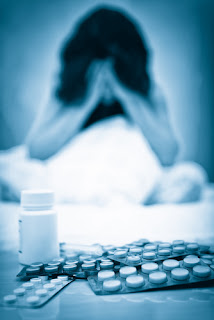Anatomy of an Epidemic: Overdose Risk and Benzodiazepines
Benzodiazepines are a class of psychoactive substances clinically shown to have anti-anxiety and sedative psychopharmacological activity. A benzodiazepine works on GABA receptors in the brain to provide a muscle-relaxing, calming effect. Diazepam, also known as valium, has been commercially available for approximately a half-century, but the dangers of
prescription drug abuse are most felt today.
Millions of Lives and the CDC
Arguably, Diazepam and Alprazolam (Xanax) are the most popular types of benzodiazepines. Although these psychoactive drugs are sold to millions of Americans every year for anxiety, seizures, and other conditions; some sources claim benzodiazepines are overprescribed and potentially dangerous. For instance, the number of emergency room visits involving an overdose on benzodiazepines doubled from 2004 to 2008, according to the Centers for Disease Control. In light of benzodiazepines' side-effects and illicit youth users, weighing the pros and cons of benzodiazepine medication is crucial for any public health discussion.
Benzodiazepines and Youth
The 2009 National Youth Risk Behavior Study demonstrated that one in five high schoolers has taken a prescription drug illicitly. Even when benzodiazepines are taken as prescribed and properly monitored, the risks of overdose, physiological dependence, and improper dosing can be prohibitively high. Use of benzodiazepines can eventually result in memory, psychomotor, and cognitive impairment. In the long term, benzodiazepines may spell worsening depression, anxiety, and profound cognitive deficits. Abuse of benzodiazepines can result in death or coma.
Overdose on Benzodiazepines
Benzodiazepines are one of the most prescribed classes of pharmaceutical medications. A benzodiazepine is especially dangerous because of its high likelihood of engendering withdrawal symptoms. In addition, benzodiazepines are reportedly linked to a superabundance of suicide attempts vis-a-vis drug overdose. Studies show that Alrazolam, the most prescribed benzodiazepine in the United States, is more toxic than Diazepam and linked to far more deaths per year than any other benzodiazepine.
Etiology and Risks of Overdose
The Annual Reports of the American Association of Poison Control Centers and the National Data Collection System demonstrated that between 1992 and 2001 dozens of deaths occurred due to self-poisining with Diazepam. Numerous studies have demonstrated similar risks for over-the-counter medications acting as benzodiazepine receptor agonists. Overdose of these benzodiazepines results in serious disturbances to the central nervous system. Diplopia, hallucinations, and delirium are all symptoms of acute intoxication vis-a-vis benzodiazepine pharmaceuticals. In the most acute ranges, overdose can result in coma or death. Science demonstrates that children and elderly consumers of benzodiazepines are at higher risk of overdose and potentially fatal reactions. The latter group often miscalculate dosage or take the wrong medication, whereas the former group frequently take benzodiazepines accidentally.
Diagnosis of Overdose
Although the exact symptoms of benzodiazepine overdose are difficult to isolate across patient populations, clinical observation and drug histories are serviceable indications of overdose. Blood concentrations of benzodiazepines and thin layer chromatography may also help inform whether a patient is experiencing overdose symptoms. In spite of the fact that benzodiazepines have a relatively low toxicity rating, benzodiazepines are used in many self-poisinings, and pose risks for certain populations.
Meta: Benzodiazepine addiction and how it can kill you is a serious issue that should deter people from abusing this drug, but its abuse continues to be a problem.





